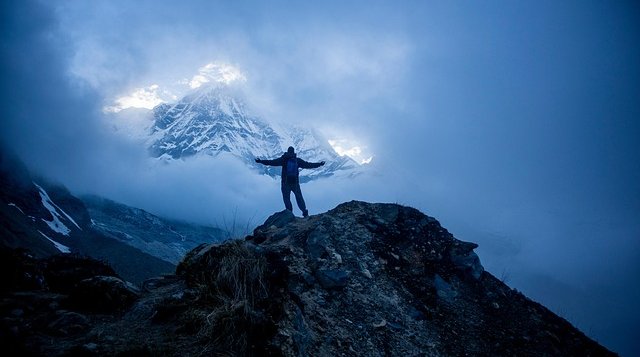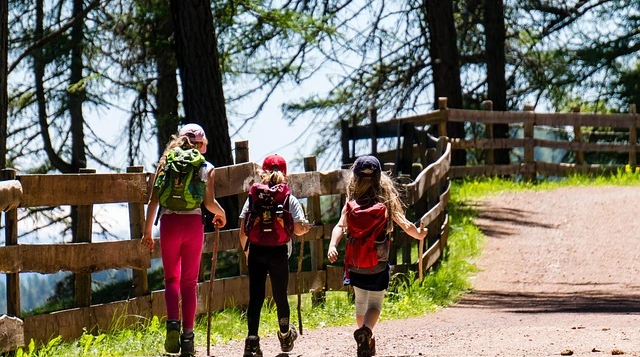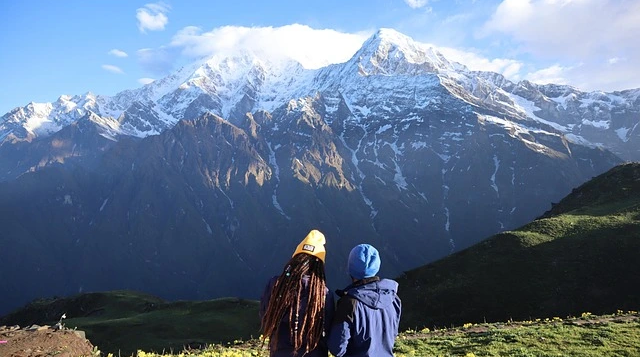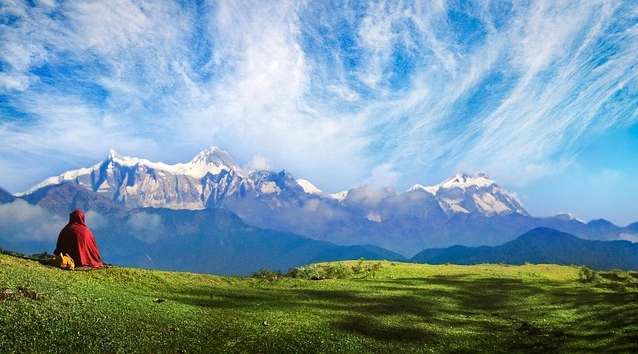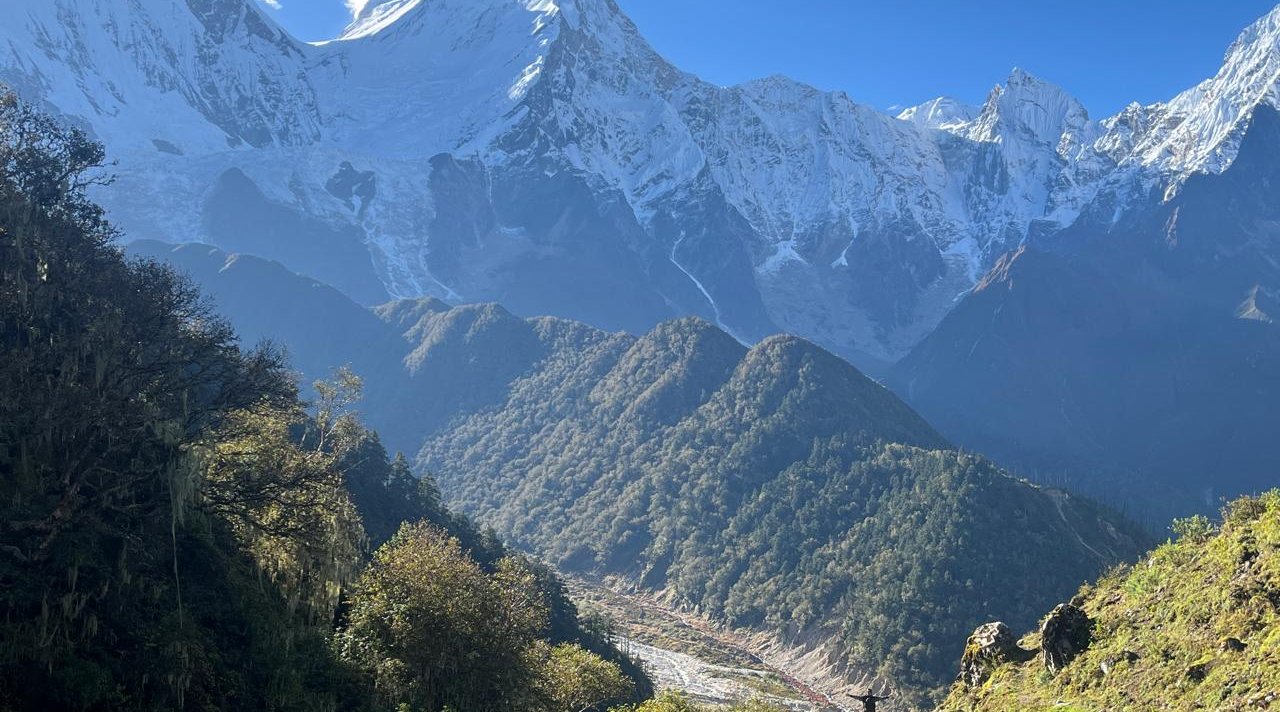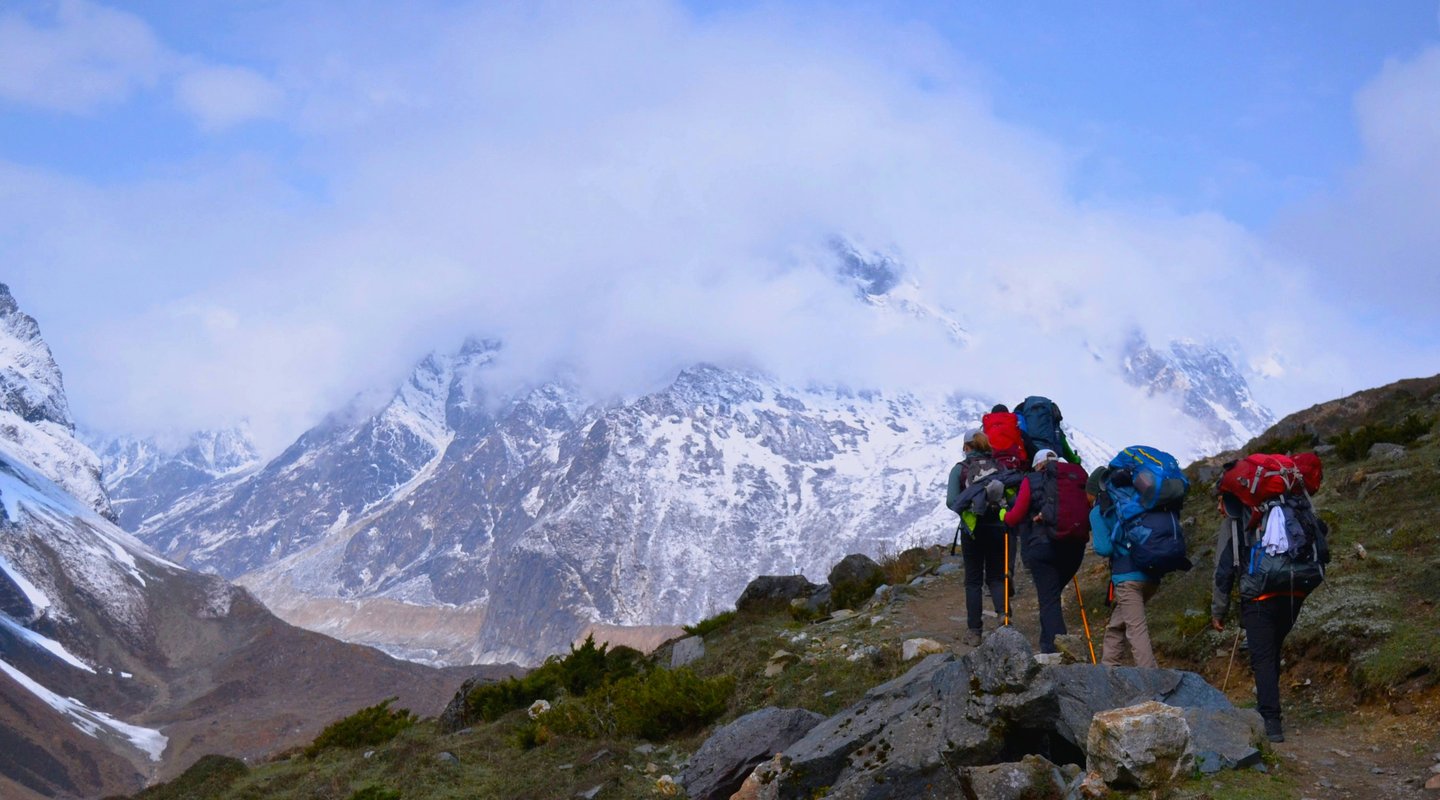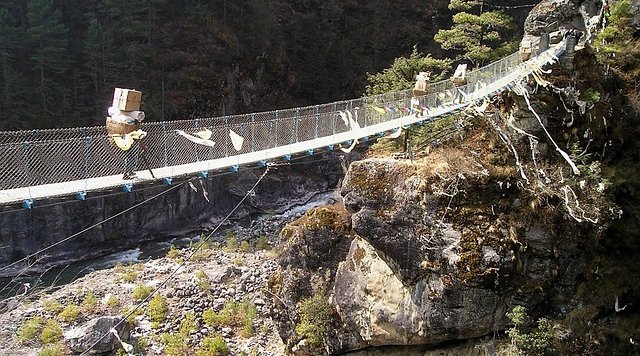Standing at Namche Bazaar's viewpoint last October, watching Everest emerge from dawn clouds, I overheard two trekkers debating: "Should we have come in spring instead?" After twelve years guiding both seasons, I finally have the answer – though it might surprise you.
Choosing between spring (March–May) and autumn (September–November) shapes everything from your backpack weight to the photos you'll treasure forever. Spring transforms mountains into botanical wonderlands, while autumn delivers views so sharp they seem unreal.
This guide dissects every aspect of Nepal trekking spring or autumn, from weather patterns shifting since 2020 to hidden costs nobody mentions. You'll discover exactly which season aligns with your trekking dreams.
Why Season Matters for Trekking in Nepal
Nepal's vertical geography creates more climate zones in 200 kilometers than most continents contain. Your seasonal choice affects everything from daily comfort to whether you'll actually see those famous peaks.
Temperature gradients shift dramatically between seasons:
- March mornings at 3,000m feel like London autumn
- Same elevation in November requires down jackets
- High passes remain 10°C colder in autumn
- Valley temperatures vary by 15°C between seasons
Trail conditions transform completely. Spring's dusty paths become autumn's firm tracks, hardened by monsoon rains.
Recent climate data shows concerning shifts:
- Spring snow lingers 2-3 weeks longer above 4,500m (compared to 2015)
- Autumn snow arrives 10 days earlier on average
- Monsoon patterns have become less predictable
- Pre-monsoon haze builds 3 weeks earlier than historical norms
Visibility determines your entire experience. Pre-monsoon haze creates layered ridge silhouettes but obscures distant peaks after noon.
Quick Takeaway: Nepal's extreme altitude range means seasonal timing affects route accessibility, gear requirements, and mountain visibility more than any other factor.
Trekking in Nepal During Spring (March–May)
Spring awakens Nepal like a slow-motion firework display. March starts with subtle valley greens, April explodes with rhododendrons, and May brings alpine wildflowers to the highest meadows.
The Living Museum of Spring
Nepal's rhododendron display rivals Japan's cherry blossoms for spectacle. These ancient trees reach 15 meters tall, creating pink cathedral light that photographers dream about.
The bloom calendar follows altitude precisely:
- 1,500-2,500m: Early March peak bloom
- 2,500-3,500m: Late March through early April
- 3,500-4,000m: Mid-April to early May
- Above 4,000m: May alpine varieties
Wildlife emerges from winter hiding. Himalayan monals perform metallic-feathered mating displays while pikas whistle across meadows.
Agricultural landscapes reach peak beauty:
- Terraced fields create emerald staircases
- Villages buzz with planting activity
- Local festivals celebrate spring harvests
- Authentic cultural experiences without tourist crowds
Spring Weather Reality Check
Morning conditions often match autumn's clarity until 10 AM. Pre-dawn starts reward photographers before atmospheric moisture builds.
Spring Temperature Ranges by Altitude:
- Valley level (below 2,000m): 18-28°C days, 12-18°C nights
- Popular zones (2,000-3,500m): 12-22°C days, 5-12°C nights
- High lodges (3,500-4,500m): 8-18°C days, 0-8°C nights
- Base camps (above 4,500m): 2-12°C days, -8 to 2°C nights
Late April brings the warmest trekking conditions. May pushes comfort levels with pre-monsoon humidity building daily.
Spring Advantages That Matter
Unique spring benefits:
- Warmer nights – sleeping bags rated to -5°C suffice
- Extended daylight – 30 minutes more than autumn
- Fewer trekkers – 40% less crowded than October
- Lower prices – accommodation costs 20-30% less
- Flexible bookings – walk-in teahouse availability
- Nature's peak – biodiversity explosion everywhere
Spring Challenges to Consider
Real downsides of spring trekking:
- Afternoon haze – mountains disappear after 1 PM
- Dusty trails – bring extra buff/face coverings
- March snow – high passes may require equipment
- May heat – lower elevations become uncomfortably humid
- Water scarcity – some regions before monsoon
- Limited flight visibility – more Lukla delays
Spring Performance on Major Routes
Everest Base Camp transforms into expedition basecamp central. Summit attempts create exciting energy as you'll meet climbers from every nation.
Annapurna Circuit requires March patience or April timing. Thorong La Pass holds snow through mid-March, affecting crossing safety.
Manaslu Circuit offers perfect spring conditions. Lower crowds than Annapurna with equally spectacular rhododendron forests.
Quick Takeaway: Choose spring for nature's color explosion, comfortable temperatures, and authentic village experiences without autumn's crowds.
Trekking in Nepal During Autumn (September–November)
Autumn arrives like someone cleaned the Himalayas' windows. After the monsoon's deep cleaning, Nepal reveals mountain views that redefine what "clear" means.
Why Autumn Dominates Trekking Statistics
Post-monsoon atmosphere creates visibility that seems computer-enhanced. Mountains 50 kilometers away show individual ridgelines and glacial features.
The numbers speak volumes:
- 60% of annual trekkers choose autumn
- October alone sees 35% of yearly visitors
- Flight bookings triple compared to spring
- Teahouse occupancy reaches 95% on popular routes
Autumn's Visual Symphony
Crystal clarity reaches absurd levels in October. Photographers capture details impossible in spring – individual trees on distant ridges, glacier crevasses from valleys below.
The autumn color palette differs completely:
- Golden harvested fields create geometric patterns
- Forests show amber and rust transitions
- Snow lines appear knife-sharp against blue sky
- Village rooftops contrast with white peaks
Festival season adds cultural vibrancy. Dashain brings family reunions, while Tihar illuminates villages with oil lamps and marigolds.
Autumn Weather Patterns
Stability defines autumn weather. Multi-day forecasts actually prove reliable – a Himalayan miracle.
Autumn Temperature Reality:
- September: Still warm with occasional showers
- October: Perfect balance of clear and comfortable
- November: Cold nights but spectacular days
- December approach: Winter is knocking at the altitude
Night temperatures plummet faster than spring. That same teahouse room needs -15°C sleeping bags by November.
Autumn Advantages Worth the Crowds
Peak season benefits:
- Guaranteed mountain views – 90% clear-day probability
- Stable weather – fewer itinerary changes
- Trail conditions – firm paths after the monsoon
- Social energy – international trekker community
- Festival experiences – authentic cultural immersion
- Photography paradise – professional-grade conditions
Autumn Challenges Beyond Crowds
Hidden autumn difficulties:
- Accommodation stress – booking essential on main routes
- Price premiums – everything costs 20-40% more
- Permit queues – hours waiting in October
- Cold reality – harsh nights above 4,000m
- Crowded viewpoints – 200+ people at Poon Hill sunrise
- Flight delays – overbooked Lukla situations
Autumn Route Experiences
Everest Base Camp becomes trekker highway in October. The social atmosphere compensates for crowds with incredible cultural exchange.
Annapurna Base Camp delivers its famous amphitheater perfectly. The sanctuary traps clear air like nature's photography studio.
Upper Mustang shines in autumn. Rain-shadow location means even late September works perfectly here.
Quick Takeaway: Autumn guarantees mountain views and stable weather but demands advance planning and crowd tolerance.
Weather Comparison: Spring vs Autumn Trekking in Nepal
Understanding Nepal trekking weather by season prevents both overpacking and underpreparing. Recent climate shifts make updated comparisons essential.
Temperature Face-Off
Spring starts cold and warms progressively. Autumn begins warm but plummets toward winter.
Actual temperature differences at popular stops:
- Namche (3,440m): Spring 8-18°C vs Autumn 5-15°C
- Dingboche (4,410m): Spring 2-12°C vs Autumn -2-10°C
- Thorong Phedi (4,450m): Spring 0-10°C vs Autumn -5-8°C
- Gorak Shep (5,164m): Spring -5-5°C vs Autumn -10-3°C
Wind patterns vary significantly. Spring afternoons bring valley winds, while autumn stays calmer overall.
Precipitation and Visibility Analysis
Spring precipitation stays minimal until late May. However, atmospheric moisture affects visibility differently from rain.
Monthly precipitation averages (Kathmandu baseline):
- March: 35mm (4 rainy days)
- April: 60mm (6 rainy days)
- October: 50mm (4 rainy days)
- November: 8mm (1 rainy day)
Visibility statistics tell the real story. October mountains appear 30% clearer than April on average visibility measurements.
Climate Change Impact Update
Recent patterns show concerning shifts. Spring 2024 saw unusual late snow above 4,000m, while autumn started three weeks earlier.
Documented changes since 2020:
- Snow line has risen 200m on average
- Monsoon ends 10-15 days later
- Spring haze develops 3 weeks earlier
- Autumn clarity window shortened by 2 weeks
Quick Takeaway: Spring offers warmth with increasing haze; autumn provides clarity with plummeting temperatures.
Crowd Levels and Trail Social Dynamics
Your season choice dramatically affects who you'll meet and whether you'll find solitude or party atmospheres. Understanding crowd patterns helps set realistic expectations.
Spring's Peaceful Progression
March offers the year's quietest trails. You might be the only foreigner in entire villages, creating authentic cultural exchanges.
Spring trekker demographics:
- More long-term travelers (3+ week trips)
- Higher percentage of repeat Nepal trekkers
- Increased solo trekker numbers
- Fewer large guided groups
- More flexibility-oriented adventurers
April brings an ideal balance. Enough trekkers for safety and social interaction without autumn's overwhelming numbers.
May sees another drop as monsoon anxiety affects bookings. Smart trekkers know early May offers excellent conditions with minimal crowds.
Autumn's Social Symphony
October transforms trails into United Nations meetings. You'll share dal bhat with trekkers from 50+ nationalities daily.
Peak season crowd reality:
- Lukla airport processes 40+ flights daily
- Popular teahouses serve 200+ dinners
- Permit offices process 500+ applications
- Trail bottlenecks at narrow sections
- Sunrise viewpoints require 4 AM starts for good spots
November offers autumn's sweet spot. Crowds thin by 50% while conditions remain excellent until month's end.
Accommodation Availability Impact
Spring flexibility cannot be overstated. Walking without bookings remains feasible, allowing spontaneous itinerary changes.
Autumn demands military precision:
- October bookings needed 2-3 months ahead
- Popular stops fill by 2 PM daily
- Private rooms nearly impossible
- Dining halls packed until 10 PM
- Hot shower queues form at peak times
Quick Takeaway: Spring enables spontaneous adventure; autumn requires detailed planning but guarantees social energy.
Scenery and Photography: Colors vs Clarity
Your camera will thank you regardless of season, but for entirely different reasons. Understanding photographic opportunities helps specialized travelers choose wisely.
Spring's Natural Color Grading
Rhododendron forests create foreground opportunities impossible in autumn. These natural frames transform ordinary mountain shots into magazine covers.
Spring photography timeline:
- 5-7 AM: Clear mountain shots before haze
- 8-10 AM: Perfect light on flowering forests
- 11 AM-2 PM: Soft haze creates layers
- 3-5 PM: Golden hour through dusty atmosphere
- Evening: Alpenglow on peaks while valleys darken
Wildlife photography peaks in spring. Active animals, mating displays, and baby everything create National Geographic moments.
Autumn's High-Definition Reality
Autumn clarity allows for technical photography impossible in spring. You can capture snow texture on peaks 30 kilometers away.
Autumn light characteristics:
- Morning alpenglow lasts 20 minutes longer
- Midday maintains excellent clarity
- No atmospheric interference until sunset
- Night sky visibility increases 40%
- Star photography reaches perfection
Festival photography adds cultural dimensions. Dashain preparations, Tihar lights, and harvest activities provide storytelling opportunities.
Altitude-Specific Photo Opportunities
Different elevations favor different seasons photographically. Understanding these zones helps specialized photographers plan.
Optimal photography by zone:
- Below 2,500m: Spring for agricultural activity
- 2,500-3,500m: Spring for rhododendron forests
- 3,500-4,500m: Either season works well
- Above 4,500m: Autumn for peak clarity
- Night sky: Autumn exclusively
Quick Takeaway: Spring delivers nature photography and soft light; autumn provides landscape clarity and technical precision.
Cost Analysis: Budget Reality Check
Money matters affect season choice more than most admit. Understanding true cost differences helps budget-conscious trekkers decide.
Accommodation Economics
Spring prices remain stable except peak April weeks. Standard teahouse rates apply without surge pricing.
Real accommodation costs by season:
- Basic room spring: $5-8 (twin sharing)
- Basic room autumn: $8-15 (same room)
- Attached bathroom spring: $15-20
- Attached bathroom autumn: $25-35
- Luxury lodge spring: $40-60
- Luxury lodge autumn: $60-100
Food prices fluctuate similarly. That $5 dal bhat becomes $7 in October, adding $50+ to longer treks.
Transportation Truth
Lukla flights cost identically ($220) year-round. However, autumn brings multi-day waiting lists costing hotel stays and patience.
Hidden transport costs:
- Spring jeep to Jiri: $30
- Autumn, same jeep: $45
- Spring porter rates: $15-18 daily
- Autumn porter rates: $20-25 daily
- Spring guide rates: $25-30 daily
- Autumn guide rates: $35-45 daily
The October Premium Breakdown
October trekking costs 35-40% more overall. A two-week Everest Base Camp trek costing $1,000 in March reaches $1,400 in October.
Where autumn money goes:
- Accommodation: +30%
- Food: +25%
- Transport: +40%
- Guides/porters: +35%
- Gear rental: +20%
- Permits: Same (small victory)
Quick Takeaway: Spring saves 30-40% while offering flexibility; autumn's premium buys weather reliability and social atmosphere.
Altitude Zone Recommendations by Season
Different elevations favor different seasons. Understanding altitude-specific advantages helps choose optimal timing for specific routes.
Valley Treks (Below 3,000m)
Spring dominates valley trekking. Comfortable temperatures, cultural activity, and flowering landscapes create perfection.
Best spring valley treks:
- Gorkha Heritage Trail
- Ruby Valley Trek
- Tamang Heritage Trail
- Lower Solu regions
Autumn valleys feel too warm initially. Better for acclimatization than destination trekking.
Classic Zone (3,000-4,500m)
This elevation works brilliantly both seasons. Most famous treks operate primarily in this zone.
Season-specific advantages:
- Spring: Rhododendron forests, warm days
- Autumn: Crystal views, stable weather
Either season delivers here. Choose based on other priorities like crowds or costs.
High Altitude (4,500-5,500m)
Autumn slightly edges spring at extreme altitude. Stable weather matters more when oxygen depletes.
High altitude considerations:
- Spring: Warmer days but afternoon clouds
- Autumn: Colder but clearer throughout
- Pass crossings: Both work with proper gear
- Camping treks: Autumn for reliability
Extreme Altitude (Above 5,500m)
Autumn wins for peaks and passes. Weather stability becomes critical where mistakes have consequences.
Quick Takeaway: Lower elevations favor spring; extreme altitudes require autumn's stability.
Expert Strategies for Each Season
Twelve years of guiding revealed strategies that transform good treks into extraordinary ones. These insider tips maximize each season's potential.
Spring Optimization Tactics
Start earlier than you think necessary. 5 AM departures beat both crowds and afternoon haze.
Spring power moves:
- Book March for maximum solitude
- Target April 10-25 for perfect balance
- Avoid May unless doing rain-shadow regions
- Pack layers – temperatures vary 20°C daily
- Bring antihistamines for pollen sensitivity
- Download offline weather apps for haze predictions
Choose routes that maximize spring advantages. Rhododendron-rich trails like Ghorepani or botanical valleys like Langtang shine.
Autumn Mastery Methods
Book everything three months ahead. This includes flights, permits, guides, and first/last night accommodation.
Autumn winning strategies:
- Target late September for fewer crowds
- Accept October crowds for perfect weather
- Use November for cold-weather training
- Start walking by 6 AM to beat groups
- Book premium lodges for crowd escape
- Join online groups for teahouse coordination
Select routes with natural crowd control. Restricted areas like Manaslu or remote regions like Dolpo maintain solitude.
Season-Specific Gear Optimization
Spring gear focuses on versatility. Layers matter more than absolute warmth.
Spring essentials others forget:
- Buff for dust protection
- Antihistamine medication
- Extra sunscreen (UV increases)
- Light rain jacket by late April
- Polarizing filter for cameras
Autumn demands warmth commitment. Nights get genuinely cold above 4,000m.
Autumn items worth their weight:
- Down jacket rated to -10°C
- Fleece-lined gloves
- Thermal base layers (2 sets)
- Hand/toe warmers for passes
- Balaclava for night bathroom runs
Quick Takeaway: Success comes from embracing each season's personality rather than fighting it.
Frequently Asked Questions
Which season is absolutely better for beginners?
Spring edges ahead for beginners. Warmer temperatures, fewer crowds, and flexible planning reduce stress while building confidence.
Can I trek during shoulder periods?
Early March and late November offer excellent compromise. Fewer crowds with reasonable weather, though higher altitudes become challenging.
How do climate patterns affect timing?
Recent shifts favor early-season trekking. March now resembles historical April, while November turns wintery faster.
Which season for Everest Base Camp specifically?
October for guaranteed views, April for warmth and expedition excitement. Both work brilliantly with different flavors.
Do remote regions favor different timing?
Yes. Rain-shadow areas like Upper Mustang or Dolpo work during monsoon. Eastern Nepal favors autumn due to extended monsoon.
How far ahead should I book?
Spring: 1-2 months sufficient except peak April. Autumn: 3-4 months essential for October, 2 months for September/November.
Your Decision Framework
After guiding hundreds through both seasons, patterns emerge. Your perfect season depends on priority ranking.
Choose Spring If You Prioritize:
- Nature and wildlife over mountain clarity
- Warm weather over perfect visibility
- Budget savings (30-40% less expensive)
- Flexibility and spontaneous planning
- Cultural authenticity without tourist focus
- Rhododendron forests (non-negotiable)
- Fewer crowds and peaceful trails
Choose Autumn If You Value:
- Mountain views above everything
- Weather stability for tight schedules
- Social atmosphere and international community
- Photography requiring maximum clarity
- Festival experiences (Dashain/Tihar)
- Established trail conditions and safety
- Classic timing that defines Himalayan trekking
The Month-by-Month Sweet Spots
March: Empty trails, emerging flowers, possible snow challenges April: Spring perfection balancing all factors May: Warm but hazy, pre-monsoon building October: Autumn's crown jewel despite crowds November: Cold but clear, diminishing crowds
Conclusion: The Season That Chooses You
So which wins – spring vs autumn trekking in Nepal? After thousands of trail kilometers across both seasons, here's my truth: the "best" season is the one that aligns with your personal Himalayan dream.
Spring whispers while autumn shouts. Spring paints with watercolors while autumn etches with precision. Neither surpasses the other; they simply offer different interpretations of perfection.
My most memorable trek? A March Manaslu Circuit where we didn't see another westerner for five days. My most spectacular views? October in the Everest region when Ama Dablam looked close enough to touch. Both live equally in my heart.
Stop searching for the "perfect" season and book the one calling you. Whether you're walking through April's rhododendron tunnels or gazing at October's crystalline peaks, Nepal's trails deliver transformation that transcends seasonal differences.
The mountains wait patiently through all seasons. They'll change your life regardless of when you arrive. The only mistake is postponing your Himalayan dreams while searching for perfect timing that doesn't exist.
Your trek starts the moment you decide. Everything else is just details.

